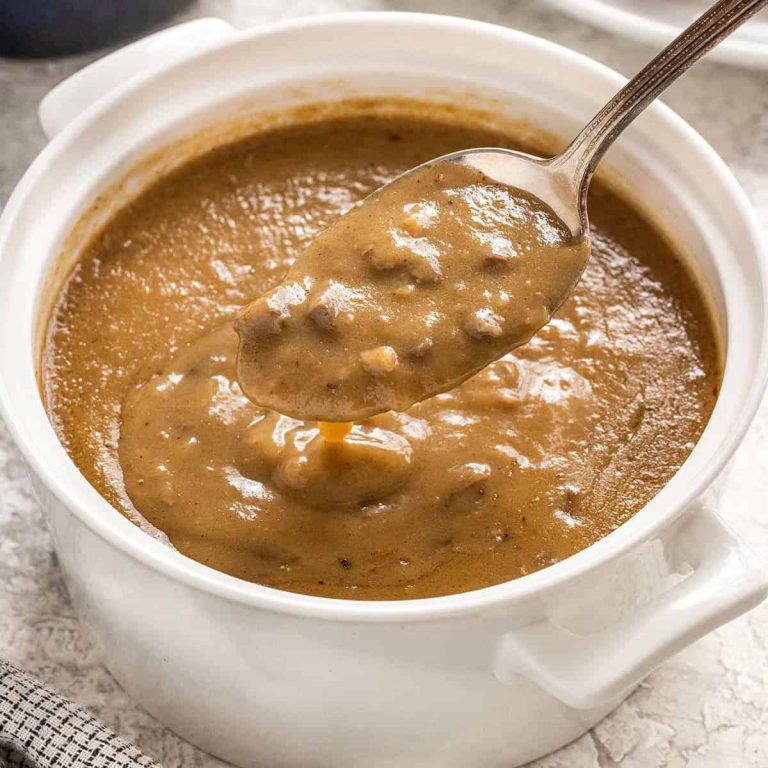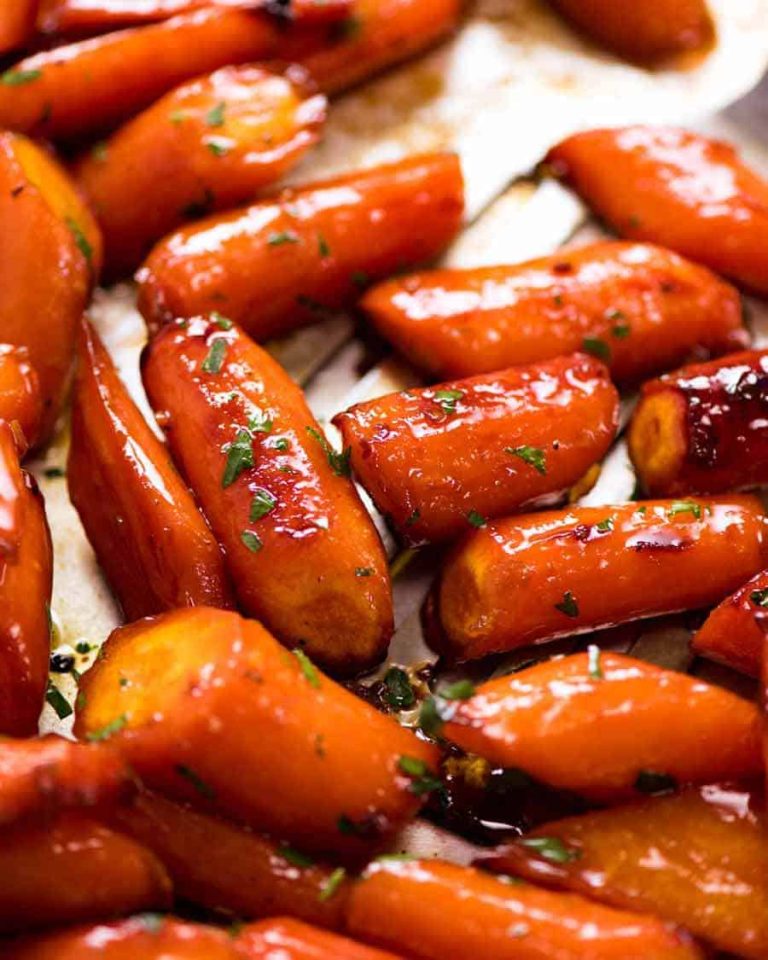Roast With Gravy: Tips, Tricks, and Healthy Alternatives
A roast consists of a substantial piece of meat, such as beef, pork, or lamb, slow-cooked in an oven. This method ensures even cooking and tender, flavorful results. Traditional roasting methods use dry heat, generating a caramelized exterior while preserving juices inside. Selecting the right cut, such as ribeye or pork loin, influences the tenderness and taste of the final dish. Adding vegetables like carrots and potatoes around the meat enriches the overall flavor profile.
The Role of Gravy in Enhancing Flavors
Gravy, a sauce made from meat drippings and thickened with flour or cornstarch, enhances the roast’s flavors. Gravy incorporates the concentrated essence of the meat, intensifying the savory elements. You can customize gravy using different stocks, such as beef or chicken, and seasonings like garlic and thyme. Adding a splash of wine or cream provides a deeper, more complex taste. Pouring gravy over the roast and vegetables not only adds moisture but also creates a cohesive, satisfying meal.
Choosing the Right Ingredients
Selecting the Meat: Beef, Pork, or Poultry?
Selecting the right meat ensures that your roast is flavorful and tender. Beef roasts (like chuck, ribeye, and sirloin) offer robust flavors and rich marbling. Pork roasts, including loin and shoulder cuts, are versatile and slightly sweet. Poultry (chicken or turkey) provides a lighter option but still absorbs herbs and spices well. Choose according to the occasion and personal preference.
Herbs and Spices for the Perfect Roast
Herbs and spices elevate the taste of your roast. Common choices include rosemary, thyme, and garlic for beef; sage, fennel, and mustard seeds for pork; and sage, rosemary, and paprika for poultry. Combine fresh and dried varieties to enhance depth. Salt and pepper are essential, as they highlight other flavors.
Key Ingredients for a Rich and Savory Gravy
Creating a rich gravy requires high-quality stock and meat drippings. Use either beef, chicken, or vegetable stock based on your meat choice. Incorporate all-purpose flour or cornstarch to thicken. Enhancements like Worcestershire sauce, wine, or soy sauce add complexity. Fresh herbs such as thyme or bay leaves infuse more flavor during simmering.
The Cooking Process
Preparing the Meat for Roasting
Properly preparing the meat ensures a flavorful roast. First, choose a high-quality cut of beef, pork, or poultry. Trim excess fat if necessary. Season the meat generously with salt, pepper, and selected herbs. Allow the meat to come to room temperature for about 30 minutes before roasting to ensure even cooking. Use a meat thermometer to monitor internal temperatures.
Tips for Cooking to Perfection
Achieving a perfect roast requires following specific steps. Preheat the oven to the recommended temperature for your chosen meat. Sear the meat in a hot pan with a bit of oil to develop a rich crust. Transfer the meat to a roasting pan, and add root vegetables (carrots, potatoes) for added flavor. Roast according to the meat type, ensuring to baste periodically. Use a meat thermometer to check for doneness—145°F for medium-rare beef, 160°F for pork, and 165°F for poultry. Let the meat rest for at least 15 minutes after roasting to retain juices.
Mastering the Art of Gravy Making
Creating a rich gravy involves using high-quality ingredients. Start by collecting the meat drippings from the roasting pan. Skim off excess fat. In a separate pan, melt butter and whisk in flour to form a roux. Gradually add stock (beef, chicken) while constantly stirring to avoid lumps. Incorporate the meat drippings, and season with salt, pepper, and optional additions like Worcestershire sauce or wine. Simmer until the gravy thickens, adjusting consistency with more stock if necessary.
Serving and Presentation Ideas
Plating Techniques for Aesthetic Appeal
Highlight the appearance of your roast with gravy by using refined plating techniques. Position the meat centrally on the plate to create a focal point. Arrange slices in a slight fan shape to showcase the texture. Drizzle the gravy artfully over the meat, ensuring it flows naturally.
Use fresh herbs like rosemary, thyme, or parsley to add a burst of color. Place these around the edges or on top of the meat. Include roasted vegetables (carrots, potatoes, parsnips) as colorful accents, positioning them symmetrically or in complementary patterns.
Employ high-contrast plates to make the food pop. White or light-colored plates enhance the visual appeal of dark gravies and roasted meats. Keep the plate uncluttered to maintain a sophisticated look.
Pairing with Side Dishes
Pair your roast with complementary side dishes to create a balanced meal. Classic mashed potatoes provide a creamy contrast to the savory meat. Green beans, steamed or roasted, offer a crunchy texture and vibrant color.
Try roasted root vegetables, including carrots, parsnips, or turnips. These bring sweetness and earthiness that pair well with the rich flavors of the roast.
Consider adding a fresh salad with vinaigrette. This helps cleanse the palate and provides a refreshing balance to the meal. Bread rolls or a baguette are great for soaking up extra gravy.
By focusing on plating techniques and side dish pairings, you enhance the presentation and overall experience of serving roast with gravy.
Maintaining Nutritional Value
Balancing Flavor with Health Benefits
Ensure your roast with gravy maintains nutritional value by balancing flavor with health benefits. Opt for lean cuts of meat, like sirloin or tenderloin, which contain less fat than other cuts. To enhance flavor without adding extra fat, use herbs (e.g., rosemary, thyme) and spices (e.g., black pepper, paprika). You can also incorporate vegetables (e.g., carrots, onions) into the roasting pan, which add nutrients and flavor to the dish. Avoid excessive salt, using natural alternatives like lemon zest and garlic instead.
Choosing Healthier Ingredients
Select healthier ingredients for your roast and gravy to maximize its nutritional value. Utilize lean meats, organic produce, and whole-grain accompaniments (e.g., brown rice, quinoa) for a balanced meal. When preparing gravy, choose low-sodium broth and limit the use of butter or cream. Substitute with healthier options (e.g., olive oil, Greek yogurt) to lower saturated fat content. Incorporate whole foods and fresh herbs to keep the meal nutritious while maintaining robust flavors.
Conclusion
Roast with gravy isn’t just a meal; it’s a comforting experience that can be tailored to suit any palate. By focusing on the quality of ingredients and thoughtful preparation, you can create a dish that’s both delicious and nutritious. Remember to balance flavors with health benefits by choosing lean meats and fresh produce. Whether you’re serving a family dinner or hosting a special occasion, a well-prepared roast with gravy will always impress. So, embrace the versatility of this classic dish and enjoy the satisfaction of a perfectly executed roast with gravy.






